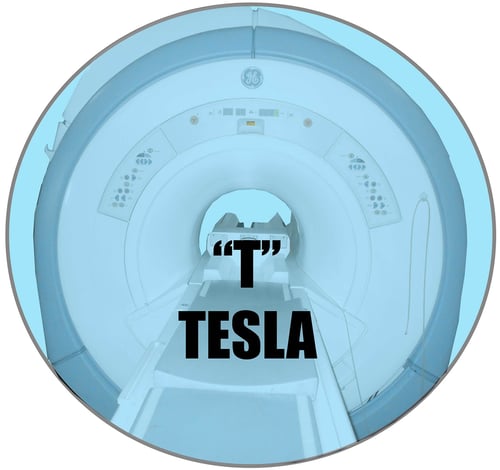Back in the Seventies, MRI clinical imaging hit the scene at 0.6 Teslas (T). By 2007, 7.0T MRI was available for research, and now there are 11T, 9T, 7T and 4T MRI in research facilities worldwide.

MRIs are identified by the strength of their magnetic field Tesla “T” a unit of measurement.
There are benefits to more powerful magnets: higher quality images, faster imaging time and more patient throughput. While 1.5T systems are considered the workhorse for MR Imaging, 3T MRI Scanners are saturating the market in the developed world. But currently, the FDA has limited the power of the MRI for clinical use to 8T, and Europe, which usually follows the lead of the US, limits MRI power to only 4T.
Advantages of Higher Field MRI Scanners
There are many advantages to MRI Scanners with Higher Fields. You get a higher contrast to noise and you get a higher signal to noise and images have a higher spatial resolution. This provides the ability to image smaller structures with improved resolution as well as giving you the ability to obtain thinner slices. In addition, images can be acquired faster with less motion degradation.
Disadvantages of a Stronger Magnetic Field
With stronger magnetic fields, the electronic device advisory must be more stringent. In addition, susceptibility effects are more pronounced, in both chemical shift and field inhomogeneity. In addition, motion degradation is more severe. Plus, hardware availability is limited as some vendors maintain a monopoly on coils and it’s difficult to build coils in-house.
Uses of Ultra High Field Imaging
Higher Field MRI Scanners are great for patients with sports-related injury to tendons, ligaments and cartilage. It’s also ideal for imaging small parts like the joints of hands and feet. They are also better for fine detail studies like evaluating bony trabecular in osteoporosis. Cartilage is also better imaged at 3T or higher and Functional MRI and MRI spectroscopy is better at higher field strength.
The Cost of Imaging With Higher Fields
The cost of imaging with higher fields is higher. For example, a special shielding is required for higher field scanners, which means a higher cost of installation. Maintenance costs are also higher. You also have to replenish cryogens more frequently at higher fields. As a result, most 3T scanners are owned by medical schools, research institutions and large corporations.
Safety Issues With Higher Field Imaging
There can be specific Absorption Rate issues, including the increased heating of tissues, which becomes an issue when imaging large structures. However, most units will adjust to approved parameters before scanning. Otherwise, higher field imaging has the same disadvantages as those found with other MRIs.
A Closer Look at a 3T MRI Scanner
3T MRI Scanners have been used in research for more than 20 years and in clinical use for almost 15 years. A 3T Scanner has nearly double the strength of a 1.5T Scanner, equaling 603x Earth’s magnetic field.
Which MRI Scanner is Right For You?
Obviously, there are advantages and disadvantages of using a higher field imaging MRI. If you’re in the market for a MRI machine, talk to one of the experts at Atlantis Worldwide. Often, it makes sense to buy a refurbished or used MRI Scanner which delivers the performance you want, but at a much lower price point. You’ll appreciate the fact that you get an impressive service warranty, too! Find out more today. Contact Us!
Some blogs you may have missed:
- The Future of Helium & MRIs
- MRI Cold Head Tips
- Service Contracts for Imaging Systems: Penny Wise and Pound Foolish?
- Radiologists, Healthcare & Social Media
- Should your business lease or buy medical imaging equipment?
- Free MRI Resources
Meet the author: Vikki Harmonay



